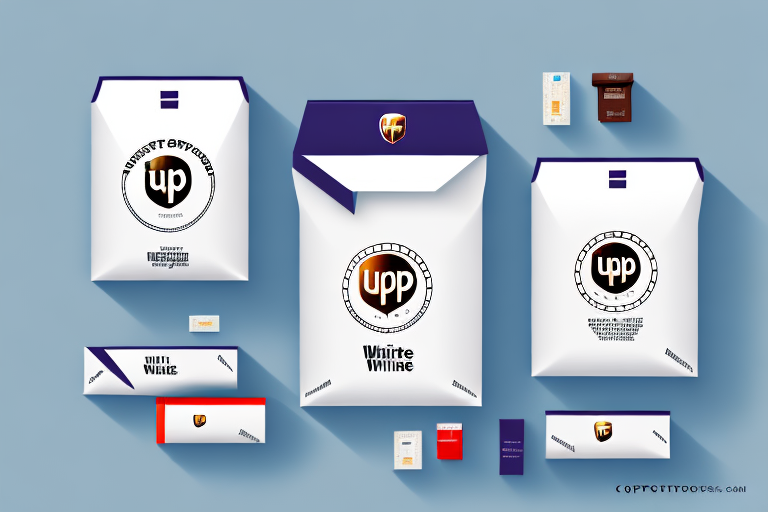Comparing Shipping Rates of UPS, FedEx, and the United States Postal Service
In today's business environment, shipping is a critical component of the supply chain process. With numerous shipping options available, determining the best carrier for your business can be challenging. This article provides a comprehensive comparison of the shipping rates and services offered by UPS, FedEx, and the United States Postal Service (USPS), along with tips to help you reduce your shipping costs.
Introduction to Shipping Rates and Services
Shipping rates vary among carriers and are influenced by factors such as package weight, size, destination, and delivery time. Each carrier offers different options and services that can impact the overall cost of shipping. To select the most suitable carrier for your business, it's essential to understand the rate structures and service offerings of each provider.
Key considerations when choosing a carrier include the level of tracking and insurance provided, as well as specialized services like temperature-controlled shipping for perishable items or hazardous materials handling for dangerous goods. Additionally, the carrier's reputation for reliability and customer service plays a significant role in ensuring smooth operations and maintaining customer satisfaction.
UPS Shipping Rates and Services
UPS offers a broad range of domestic and international shipping services, including ground, air, and freight options. The cost of UPS shipping is determined by the package's weight, size, distance traveled, and delivery speed. UPS also provides additional services such as declared value coverage, signature confirmation, and Saturday delivery, which may incur extra costs.
One significant advantage of using UPS is their extensive network of drop-off locations, including UPS Stores, authorized shipping outlets, and drop boxes. This network allows customers to send and receive packages conveniently without waiting for a delivery driver.
Furthermore, UPS offers specialized solutions for businesses, such as supply chain management, customs brokerage, and fulfillment services. These services help businesses streamline their operations, reduce costs, and increase efficiency. According to UPS's 2023 Annual Report, their global network supports over 220 countries and territories, enhancing their capacity to serve diverse business needs.
FedEx Shipping Rates and Services
FedEx provides a variety of shipping options for both domestic and international needs, including ground, express, and freight services. The cost of FedEx shipping depends on the package's weight, size, and delivery speed. Additional services such as insurance, signature confirmation, and Saturday delivery are available at an extra cost.
FedEx also caters to specific industries with specialized shipping services. For example, they offer temperature-controlled shipping for medical supplies, secure transportation for aerospace components, and customized solutions for e-commerce businesses.
In addition to shipping services, FedEx provides a range of logistics and supply chain solutions, including inventory management, warehousing, and transportation optimization. These solutions are designed to help businesses of all sizes streamline their operations and reduce costs. According to FedEx's 2023 Logistics Report, businesses that utilize their comprehensive logistics solutions have seen up to a 25% improvement in supply chain efficiency.
United States Postal Service (USPS) Shipping Rates and Services
The United States Postal Service is the most widely used shipping carrier in the U.S. USPS offers several domestic and international shipping services, including Priority Mail, First-Class Mail, and Parcel Select. The cost of USPS shipping is determined by the package's weight, size, and destination. Similar to other carriers, USPS provides additional services such as insurance, signature confirmation, and Priority Mail Express.
One of the primary advantages of using USPS is their flat-rate shipping options. This means that regardless of the package's weight or size, you can ship it for a fixed price as long as it fits in the designated box or envelope. This can be a cost-effective option for heavier items or for businesses that need to ship multiple items simultaneously.
USPS also offers free package pickup services for businesses and individuals with a certain volume of shipments, saving time and money by eliminating the need to visit a post office. Additionally, the USPS Informed Delivery program allows customers to preview incoming mail and packages online before they arrive, enhancing tracking and management capabilities.
Factors Affecting Shipping Rates
Several factors influence shipping rates beyond just distance, package size, and weight:
- The origin and destination of the package
- The type of service chosen (ground, air, or freight)
- The level of insurance coverage selected
- The requirement for signature or delivery confirmation
- The delivery timeline (e.g., next-day, two-day delivery)
Seasonal demand also plays a crucial role in shipping rates. During peak periods, such as the holiday season, rates may increase due to higher demand. Additionally, the nature of the items being shipped can affect costs. Hazardous materials or fragile items may require special handling and packaging, leading to higher shipping expenses.
Understanding Shipping Zones and Delivery Times
Each carrier divides the U.S. into shipping zones based on location. The distance between the package's origin and destination determines the shipping zone, which is essential for calculating shipping costs. Generally, shipping rates increase with distance, and delivery times are longer for packages traveling across more zones.
It's important to note that shipping zones can differ between carriers, so it's essential to consult your specific carrier to determine the correct zone for your package. Additionally, some carriers offer expedited shipping options that can reduce delivery times, albeit at a higher cost.
External factors such as weather conditions, holidays, and peak shipping seasons can also impact delivery times. Planning ahead and allowing extra time during these periods can help ensure that your packages arrive on time.
Comparison of Domestic Shipping Rates
When comparing domestic shipping rates among UPS, FedEx, and USPS, several factors must be considered, including package size and weight. Generally, USPS offers the most cost-effective option for packages under 2 lbs. For larger packages, UPS Ground shipping may be more economical. FedEx's rates for standard and next-day shipping are typically higher than those of UPS and USPS.
Each carrier also provides different services and delivery options. For instance, UPS and FedEx offer guaranteed delivery times for their expedited services, while USPS does not. Additionally, USPS's flat-rate boxes can be a cost-effective choice for heavier items that fit within the box dimensions. It's crucial to compare the rates and services of each carrier to determine the best option for your specific shipping needs.
Comparison of International Shipping Rates
International shipping rates can be significantly higher, making it essential to choose a carrier that offers the best value for your business. Generally, UPS and FedEx have higher international shipping rates compared to USPS. However, UPS and FedEx provide faster delivery times and more reliable tracking options, which can be critical for international shipments.
Additionally, UPS and FedEx have more extensive international networks, allowing them to ship to more remote locations. Evaluating the balance between cost and the benefits of faster delivery and reliable tracking is vital when selecting a carrier for international shipments. According to the Statista Shipping Carriers Report 2023, UPS and FedEx hold the largest market shares in international shipping due to their extensive global infrastructure.
Which Carrier Offers the Best Value for Your Business?
Choosing the best carrier depends on various factors such as package size, delivery speed, and budget. For cost-efficiency, USPS may be the optimal choice, especially for smaller and lighter packages. If you require fast and reliable shipping, FedEx or UPS might be more suitable options.
Consider the destination of your packages as well. For frequent international shipments, carriers like DHL, with their expansive global network, might offer the most efficient service. Additionally, some carriers provide extra services such as package tracking, insurance, and signature confirmation, which could be important for your business operations. Evaluating all these factors and comparing pricing and services will help determine which carrier offers the best value for your specific business needs.
Tips for Choosing the Right Carrier for Your Needs
When selecting the appropriate carrier, consider the following tips:
- Determine the weight and size of your packages
- Identify your delivery speed requirements
- Consider the delivery destination (domestic or international)
- Assess the need for additional services such as signature confirmation or insurance
- Shop around for quotes from different carriers
Additionally, evaluate the reliability and track record of the carriers. Look for those with a strong reputation for on-time deliveries and minimal damage. Online reviews and ratings can provide valuable insights into a carrier's reliability.
Cost is another critical factor. While you want a carrier that meets your needs, it's also important to avoid overspending on shipping costs. Seek carriers that offer competitive rates and discounts for bulk shipments to optimize your shipping budget.
How to Save Money on Shipping Costs with Discounts and Negotiations
To reduce shipping costs, consider the following strategies:
- Use a shipping calculator to identify the most cost-effective carrier
- Join shipping programs like UPS My Choice or FedEx Advantage for discounts and rewards
- Negotiate better rates with carriers based on your shipping volume
- Utilize free packaging options offered by each carrier
Exploring regional carriers can also lead to cost savings, as they often offer lower rates for specific regions and more flexible delivery options, such as same-day or weekend delivery. Regularly reviewing your shipping expenses and analyzing patterns can help identify areas where you can cut costs, such as focusing on more cost-effective shipping methods for certain products or destinations.
Real-Life Examples of Businesses Saving Money on Shipping Costs
Many businesses have successfully reduced their shipping expenses by leveraging carrier discounts and negotiating better rates. For instance, a small business owner managed to save 30% on FedEx shipping costs by negotiating based on shipping volume. Additionally, another company saved over $5,000 annually by switching to USPS Priority Mail instead of FedEx, demonstrating the potential for significant savings through strategic carrier choices.
Conclusion
When comparing the shipping rates and services of UPS, FedEx, and USPS, no single carrier stands out as the best choice for all businesses. It's essential to consider factors such as package size, weight, delivery speed, and destination when selecting the right carrier. By carefully evaluating these factors and implementing cost-saving strategies, businesses can significantly reduce their shipping costs while ensuring fast and reliable delivery services for their customers.




















